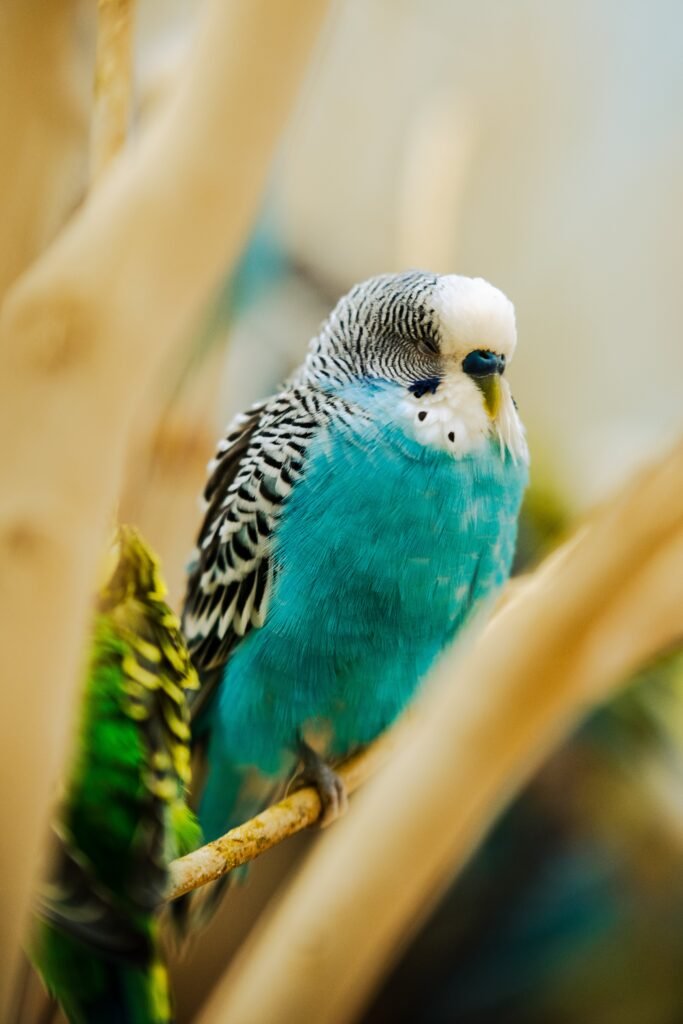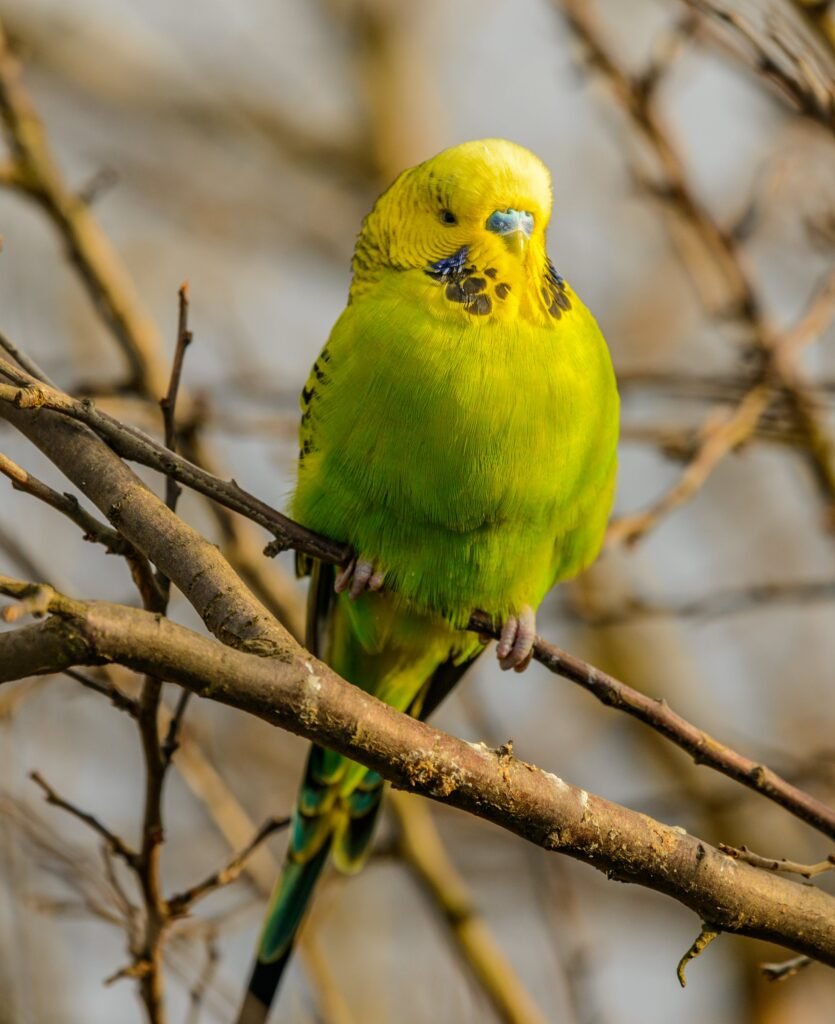
Budgies, also known as parakeets, are small and colourful birds that make popular companions for many bird enthusiasts. If you have a budgie or are considering getting one, it is important to understand how these delightful creatures sleep. This article will explore the fascinating world of budgie sleep patterns and provide valuable insights into their sleep habits.
Understanding Budgie Sleep Patterns
Budgies are diurnal creatures, which means they are most active during the day and sleep at night. However, their sleep patterns are quite different from those of humans. While humans often sleep for a continuous period, budgies have a unique sleeping pattern known as polyphonic sleep.
Polyphonic sleep is the ability to sleep for short periods multiple times throughout the day. Budgies typically take short naps or sleep in brief intervals rather than having one long continuous sleep session. This behaviour is believed to be an adaptation that allows them to remain vigilant against potential threats in the wild.
Budgies are highly adaptable birds, and their sleep patterns can vary depending on their environment and individual preferences. Some budgies prefer longer sleep periods at night, while others take shorter, more frequent naps throughout the day. Observing your budgie’s sleep patterns and adjusting their sleeping area accordingly to ensure they get the rest they need is important.
Where Do Budgies Sleep?
In their natural habitat, budgies sleep in tree hollows or cavities where they can find shelter and protection from predators. When kept as pets, providing a suitable sleeping area is essential for the well-being of your budgie.
It is recommended that your budgie have a separate sleeping cage or a covered area within the main cage where it can retreat for uninterrupted sleep. This sleeping area should be cosy, quiet, and free from disturbances. By providing a designated sleeping space, you create a sense of security and privacy for your budgie, mimicking their natural sleeping environment.
To make the sleeping area more comfortable, consider adding a comfortable perch and soft bedding materials, such as fleece or shredded paper. These materials provide a cosy surface for your budgie to rest on and help absorb droppings, keeping the sleeping area clean and hygienic.

Signs of Budgie Sleep
While budgies do not have eyelids like humans, they can sleep with one eye open. This adaptation allows them to stay alert even while resting. Observing your budgie’s sleeping position and behaviour can give you valuable insights into their sleep patterns and overall health.
Here are some common signs of budgie sleep:
- Puffed-up feathers: When budgies sleep, they often fluff up their feathers to create a warm and cosy nest-like environment. This helps them regulate their body temperature and provides comfort while sleeping.
- Closed eyes: Although budgies can sleep with one eye open, they generally close both eyes during deep sleep, which indicates a more restful state. It is important to note that budgies may also take short naps with open eyes, especially in a new or unfamiliar environment.
- Quiet and still: Sleeping budgies are generally quiet and may not engage in chirping or vocalizations. They remain still and may even tuck their heads under their wings. This stillness helps conserve energy and promotes a more restful sleep.
- Crouched position: During sleep, budgies often adopt a crouched position, lowering their bodies and tucking in their feet. This posture helps them conserve body heat and creates a sense of security and comfort.
By understanding these signs of budgie sleep, you can better monitor your bird’s well-being and ensure it is getting the restful sleep it needs to stay healthy.
Creating a Sleep-Friendly Environment
To ensure your budgie gets sufficient restful sleep, it is important to create a sleep-friendly environment. Here are some tips to help you provide the best sleeping conditions for your feathered friend:
- Maintain a consistent sleep schedule: Establishing a routine by maintaining a consistent sleep schedule for your budgie is essential. Budgies thrive on routine; dedicated sleep time can help them feel secure and relaxed. Try to provide a quiet and undisturbed environment during their designated sleep times.
- Cover the cage: To simulate the natural darkness in which budgies sleep, you can cover the cage partially or completely with breathable fabric. This will help create a cosy and secure sleeping environment for your budgie. The covering should allow for proper ventilation to prevent overheating.
- Reduce noise and disturbances: Budgies are sensitive to noise, so it is important to minimize any loud sounds or disturbances near their sleeping area. Avoid placing their cage in high-traffic areas or near noise sources such as televisions or loud appliances. Additionally, consider using white noise machines or calming music to drown out any external noises that may disrupt their sleep.
- Monitor temperature and lighting: Budgies are comfortable in temperatures ranging from 65 to 85 degrees Fahrenheit (18 to 29 degrees Celsius). Ensure their sleep environment maintains a suitable temperature and they are not exposed to direct sunlight. Excessive heat or cold can disrupt their sleep and lead to health issues. Additionally, make sure the lighting in the room is dim during their designated sleep times to mimic natural nighttime conditions.
By implementing these tips, you can create a sleep-friendly environment that promotes restful sleep for your budgie.
Common Sleep Issues in Budgies
Just like humans, budgies can also experience sleep-related issues. It is crucial to identify and address these problems to ensure their well-being.
- Sleep deprivation: Lack of adequate sleep can lead to behavioural and health issues in budgies. Be mindful of any changes in their sleep patterns or signs of restlessness that may indicate sleep deprivation. If you notice any concerns, consult an avian veterinarian for guidance. They can help identify the underlying cause and provide appropriate solutions to improve your budgie’s sleep quality.
- Night frights: Budgies are susceptible to night frights, which are sudden and intense episodes of fear during sleep. Loud noises, sudden movements, or unfamiliar surroundings can trigger these episodes. To prevent night frights, ensure their sleeping area is safe, and provide enough dim lighting to ease their transition from sleep to wakefulness. Consider using a night light or a small lamp to provide security during the night.
- Sleep disturbances: Budgies can be easily disturbed during sleep, especially by sudden loud noises or bright lights. Pay attention to their surroundings and take measures to minimize potential disruptions. This can include keeping their sleeping area away from high-traffic areas, covering the cage with a breathable fabric to reduce noise and light, and ensuring their sleep environment is calm and peaceful.
Addressing these sleep issues can help your budgie get the quality sleep they need to maintain optimal health and well-being.
Final Thoughts
Understanding how budgies sleep is crucial for their overall health and well-being. By providing a comfortable and secure sleeping environment, maintaining a consistent sleep schedule, and addressing any sleep-related issues, you can ensure your budgie gets the restful sleep it needs. Remember, a well-rested budgie is a happy and healthy companion. So, prioritize their sleep needs and create a sleep-friendly environment that promotes well-being.
FAQ
1. What are budgie sleep patterns like?
Budgies have a unique sleeping pattern known as polyphasic sleep, where they sleep for short periods multiple times throughout the day. This allows them to remain vigilant against potential threats.
2. Where do budgies sleep?
In their natural habitat, budgies sleep in tree hollows or cavities. To provide a cosy and uninterrupted sleeping environment, pets should have a separate sleeping cage or a covered area within the main cage.
3. What are the signs of budgie sleep?
Signs of budgie sleep include puffed-up feathers, closed eyes, quietness, and stillness. They may also adopt a crouched position to conserve heat and feel secure.
4. How can I create a sleep-friendly environment for my budgie?
To create a sleep-friendly environment, maintain a consistent sleep schedule, partially or completely cover the cage with a breathable fabric, reduce noise and disturbances, and monitor temperature and lighting to mimic natural nighttime conditions.



